Arroz con mariscos (Rice with seafood)
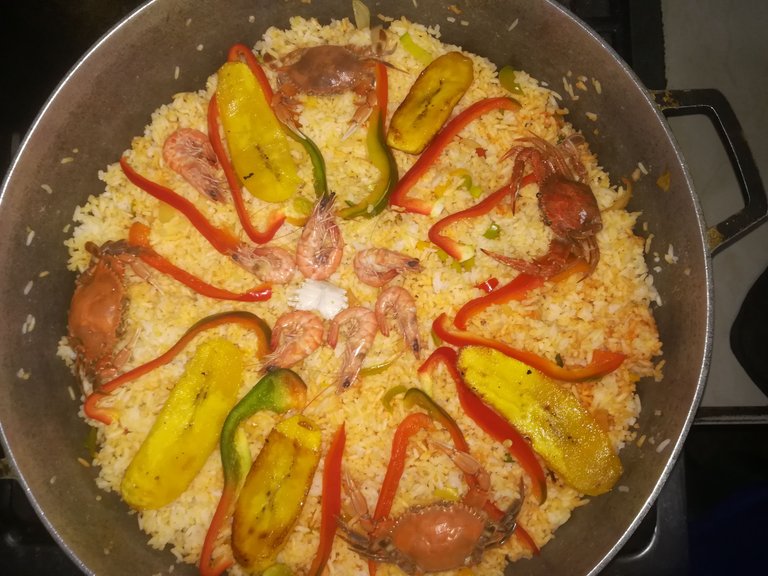
Feliz día para todos, amigos de @foodies. Hoy voy a compartir con ustedes un invento que hicimos aquí en la casa, con unos mariscos que pescamos en la orilla del Mar Caribe, ya que vivimos a pocos metros de la playa. A este plato quisimos llamarlo “arroz con mariscos”, para no confundir con paella o arroz a la marinera, por cuanto usamos ingredientes diferentes.
Happy day to all, friends of @foodies. Today I am going to share with you an invention we made here at home, with some seafood we caught on the shore of the Caribbean Sea, since we live a few meters from the beach. We wanted to call this dish "arroz con mariscos", so as not to confuse it with paella or arroz a la marinera, since we used different ingredients.
Los mariscos usados para preparar este plato, los pescamos a la orilla del mar, usando una pequeña red y unas pocas horas. Sin más preámbulo, les presento los ingredientes y la forma de preparación.
The seafood used to prepare this dish was caught at the seashore, using a small net and a few hours. Without further ado, here are the ingredients and how to prepare it.
Ingredientes (Ingredients):
17 jaibas / 17 crabs;
2 calamares / 2 squid;
1.5 kilogramos de camarones / 1.5 kilograms of shrimp;
1.5 kilogramos de arroz / 1.5 kilograms of rice;
1 pimentón maduro / 1 ripe bell pepper;
1 rama de ajo porro / 1 branch of garlic;
2 cebollas grandes / 2 large onions;
250 gramos de ají dulce / 250 grams of sweet chili bell pepper;
1 cabeza de ajo / 1 head of garlic;
2 plátanos maduros / 2 ripe plantains;
1 taza de aceite / 1 cup of oil;
Sal al gusto / Salt to taste.
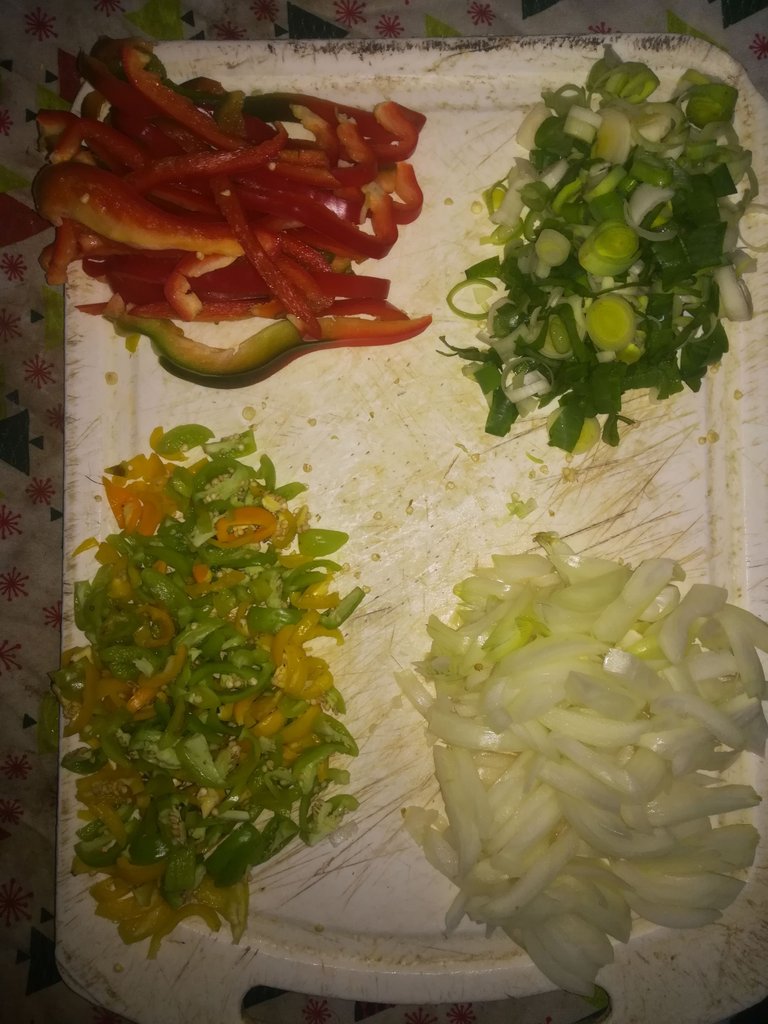
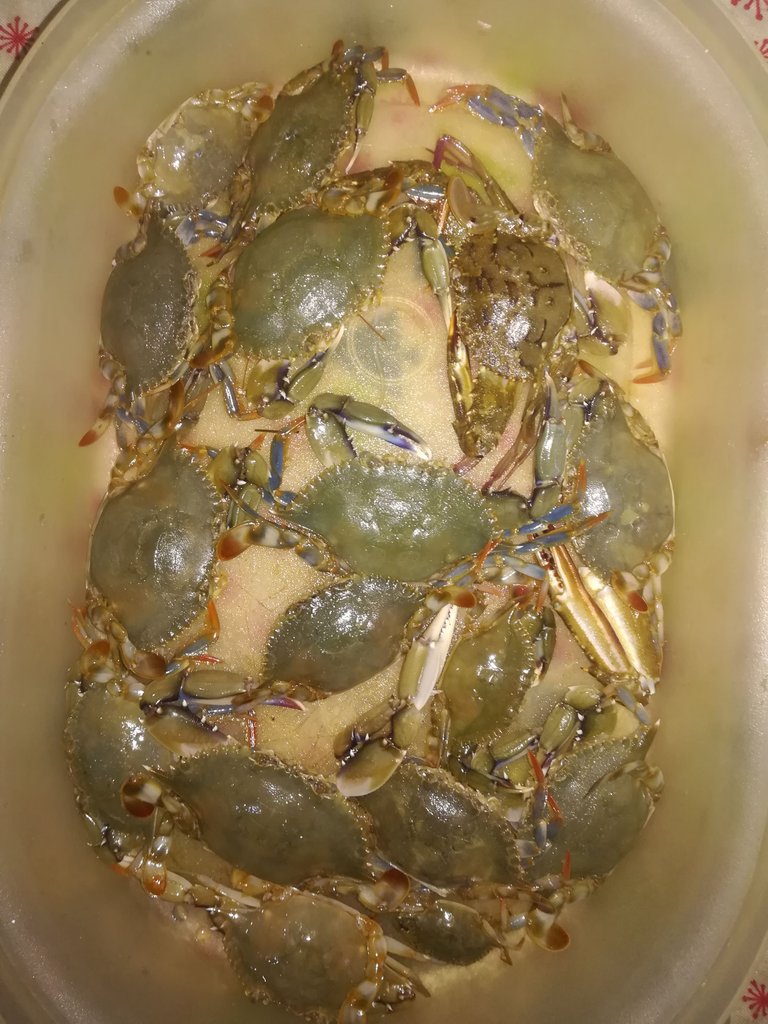
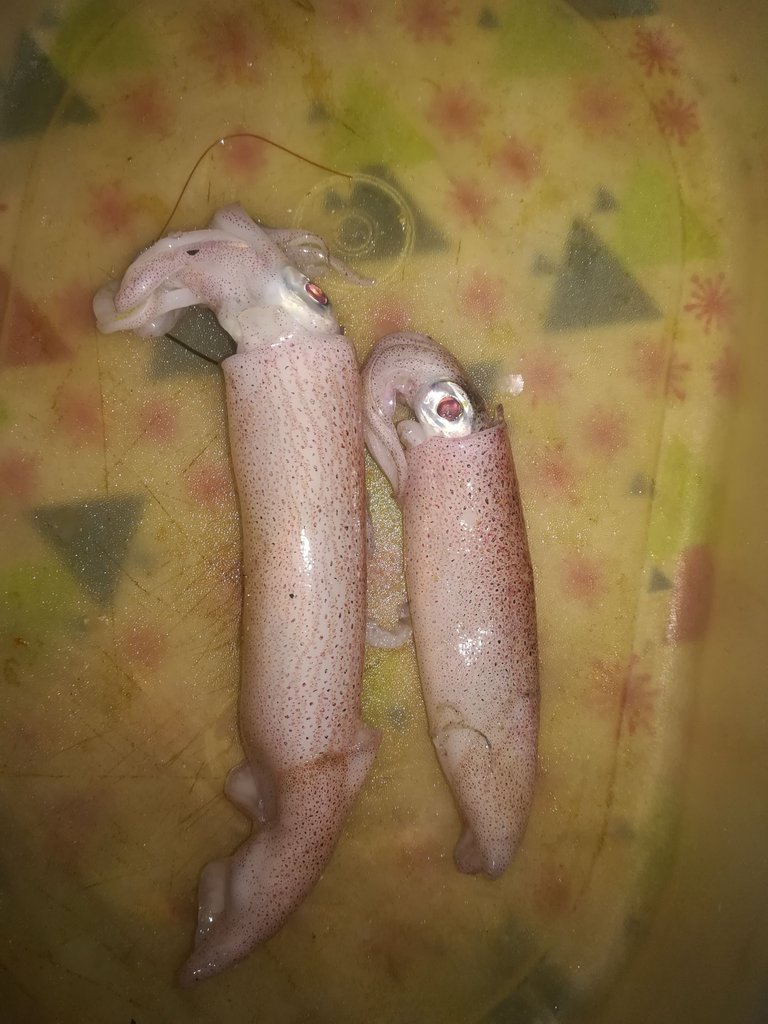
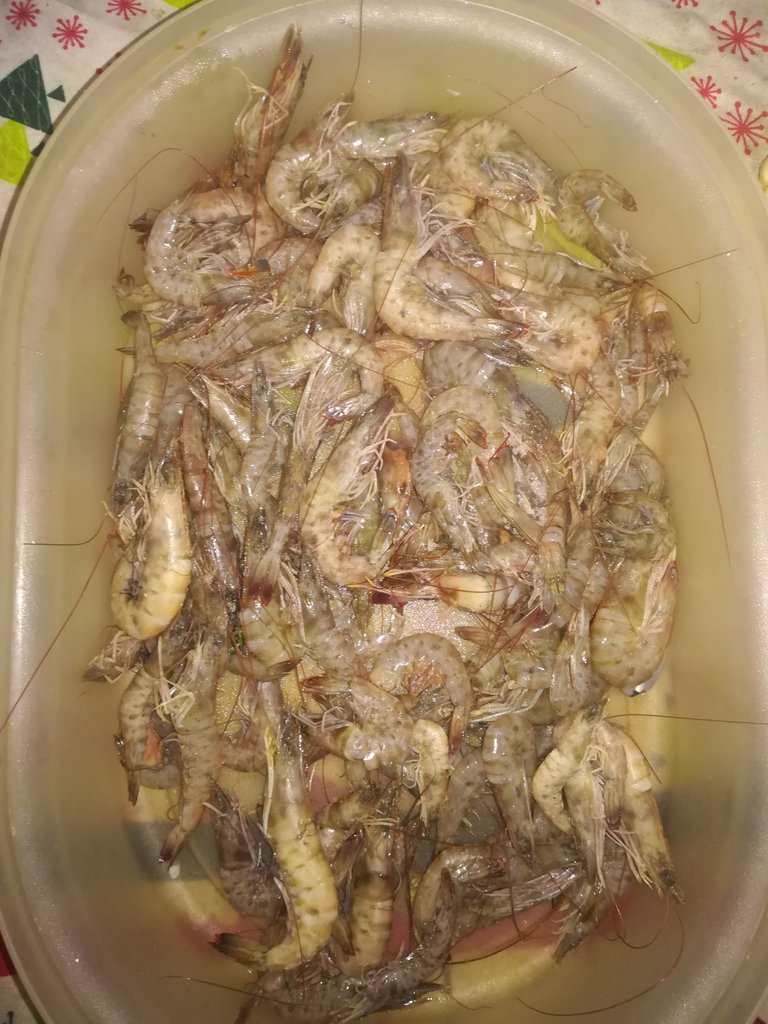
Preparación (Preparation):
Primeramente, debemos lavar los mariscos para sacarle los residuos que traen del mar; seguidamente, colocamos las jaibas, los calamares y los camarones en ollas con agua hirviendo y sal, cada uno por separado porque tienen tiempo de cocción diferente.
First, we must wash the seafood to remove the residues they bring from the sea; then, we place the crabs, squids and shrimps in pots with boiling water and salt, each one separately because they have different cooking times.
Reconocemos que están cocidos porque las jaibas y los camarones se tornan en un color rojizo bastante pronunciado, mientras que los calamares se hinchan y largan la piel.
We can recognize that they are cooked because the crabs and shrimps turn into a quite pronounced reddish color, while the squids swell and shed their skin.
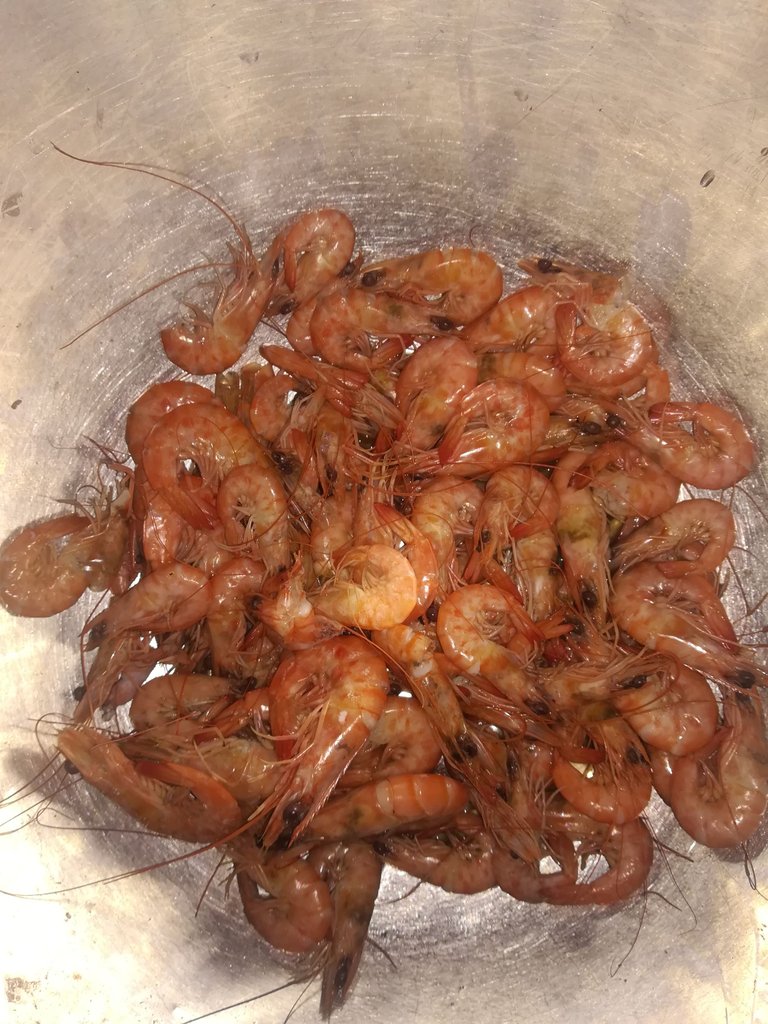
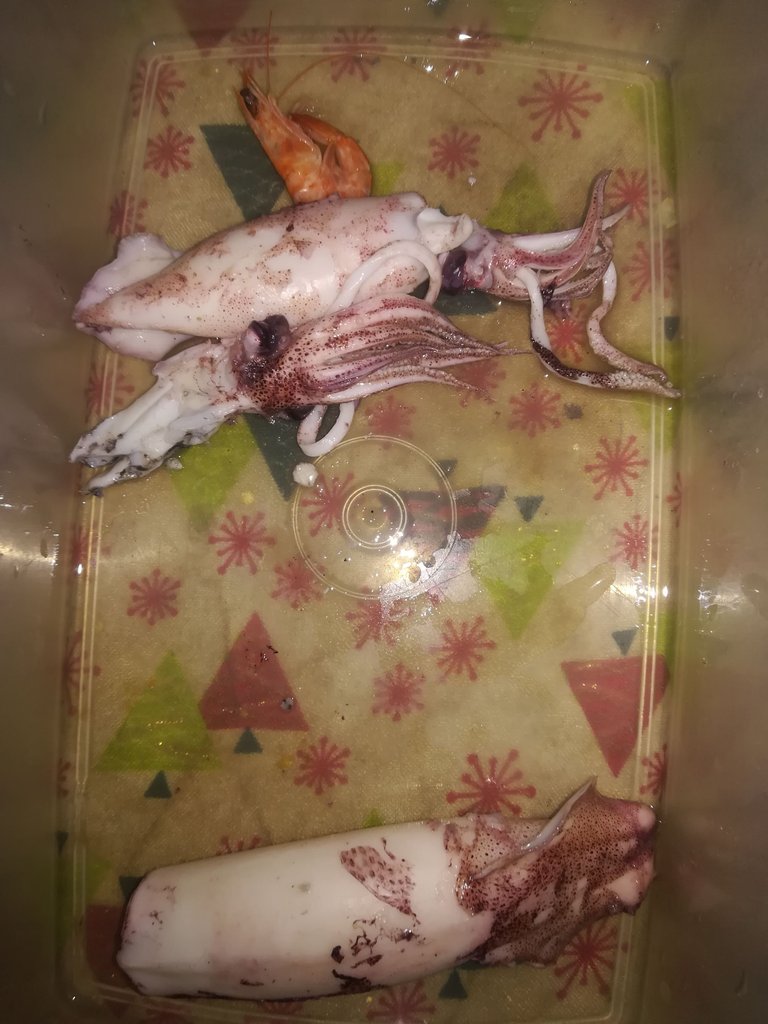
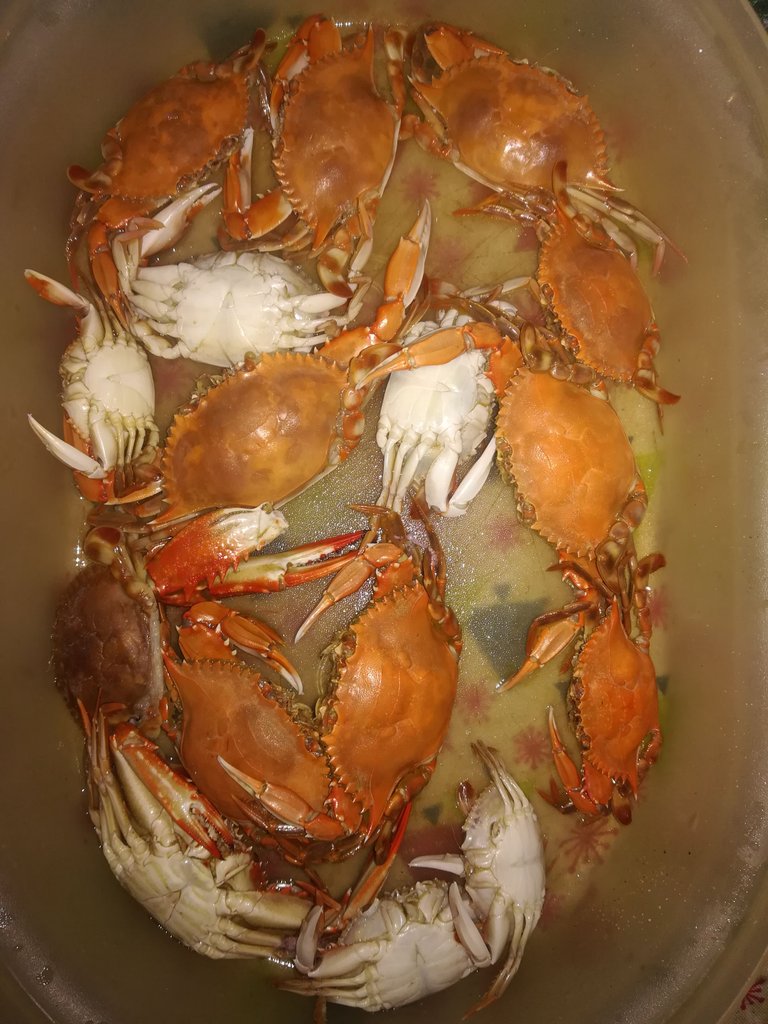
Ahora bien, cocidos los mariscos, procedemos a limpiar los calamares halando la cabeza por los tentáculos, quedando solo la parte superior donde están las aletas. Una vez retirada la cabeza, podemos ver en su interior una especie de “pluma” y una masa amarillenta, retiramos todo de su interior hasta que quede completamente limpio.
Now that the seafood is cooked, we proceed to clean the squid by pulling the head by the tentacles, leaving only the upper part where the fins are. Once the head is removed, we can see inside a kind of "feather" and a yellowish mass, we remove everything inside until it is completely clean.
Una vez limpios los calamares, los picamos en rebanadas finas de manera que quede una especie de aros. Con la cabeza podemos preparar una salsa para echarle a los vegetales, cuidando de sacarle el ojo y el pico, los cuales salen apretándolos con la mano.
Once the squid are clean, we chop them into thin slices so that they are a kind of rings. With the head we can prepare a sauce to add to the vegetables, taking care to remove the eye and the beak, which come out by squeezing them with the hand.
En una olla paellera, salteamos las cebollas, los ajíes, el ajo porro y el ajo con media taza de aceite y agregamos la salsa que resulta de licuar las cabezas de los calamares. Agregamos un poco de sal para ir dando el saber deseado.
In a paella pan, sauté the onions, the chili peppers, the garlic and the garlic with half a cup of oil and add the sauce that results from liquefying the squid heads. Add a little salt to give the desired flavor.
Una vez salteados los vegetales, agregamos el arroz y los mariscos, lo mezclamos con los vegetales y luego añadimos el agua para que el arroz quede bien cocido.
Once the vegetables are sautéed, add the rice and the seafood, mix it with the vegetables and then add the water so that the rice is well cooked.
Debemos estar pendientes que el arroz no se queme, por lo que debemos moverlo con una cuchara grande de manera casi constante. Cuando observemos que el agua está casi agotada, es decir, el arroz está casi seco, apagamos el fuego y tapamos para que el arroz absorba el agua que queda en la olla, y es cuando colocamos el pimentón maduro picado en julianas.
We must make sure that the rice does not burn, so we must move it with a large spoon almost constantly. When we observe that the water is almost exhausted, that is to say, the rice is almost dry, we turn off the fire and we cover so that the rice absorbs the water that remains in the pot, and it is when we place the ripe paprika chopped in julienne strips.
Mientras el arroz termina de secarse, ya con el fuego apagado, freímos los plátanos, los cuales ya hemos picado en finas lonchas.
While the rice finishes drying, and with the fire off, we fry the plantains, which we have already chopped into thin slices.

Una vez frito los plátanos y seco el arroz, procedimos a servir este sabroso y nutritivo plato, disfrutándolo más porque nosotros mismos pescamos los mariscos.
Once the plantains are fried and the rice is dry, we proceed to serve this tasty and nutritious dish, enjoying it more because we fished the seafood ourselves.
Me despido agradeciéndoles haber leído este mensaje, esperando que puedan prepararlo y disfrutarlo, tanto o más que nosotros. Hasta la próxima oportunidad.
*I say goodbye thanking you for reading this message, hoping that you can prepare it and enjoy it as much or more than we did. Until next time

Congratulations @abogcoronado! You have completed the following achievement on the Hive blockchain and have been rewarded with new badge(s) :
Your next target is to reach 2000 upvotes.
Your next payout target is 100 HP.
The unit is Hive Power equivalent because your rewards can be split into HP and HBD
You can view your badges on your board and compare yourself to others in the Ranking
If you no longer want to receive notifications, reply to this comment with the word
STOPTo support your work, I also upvoted your post!